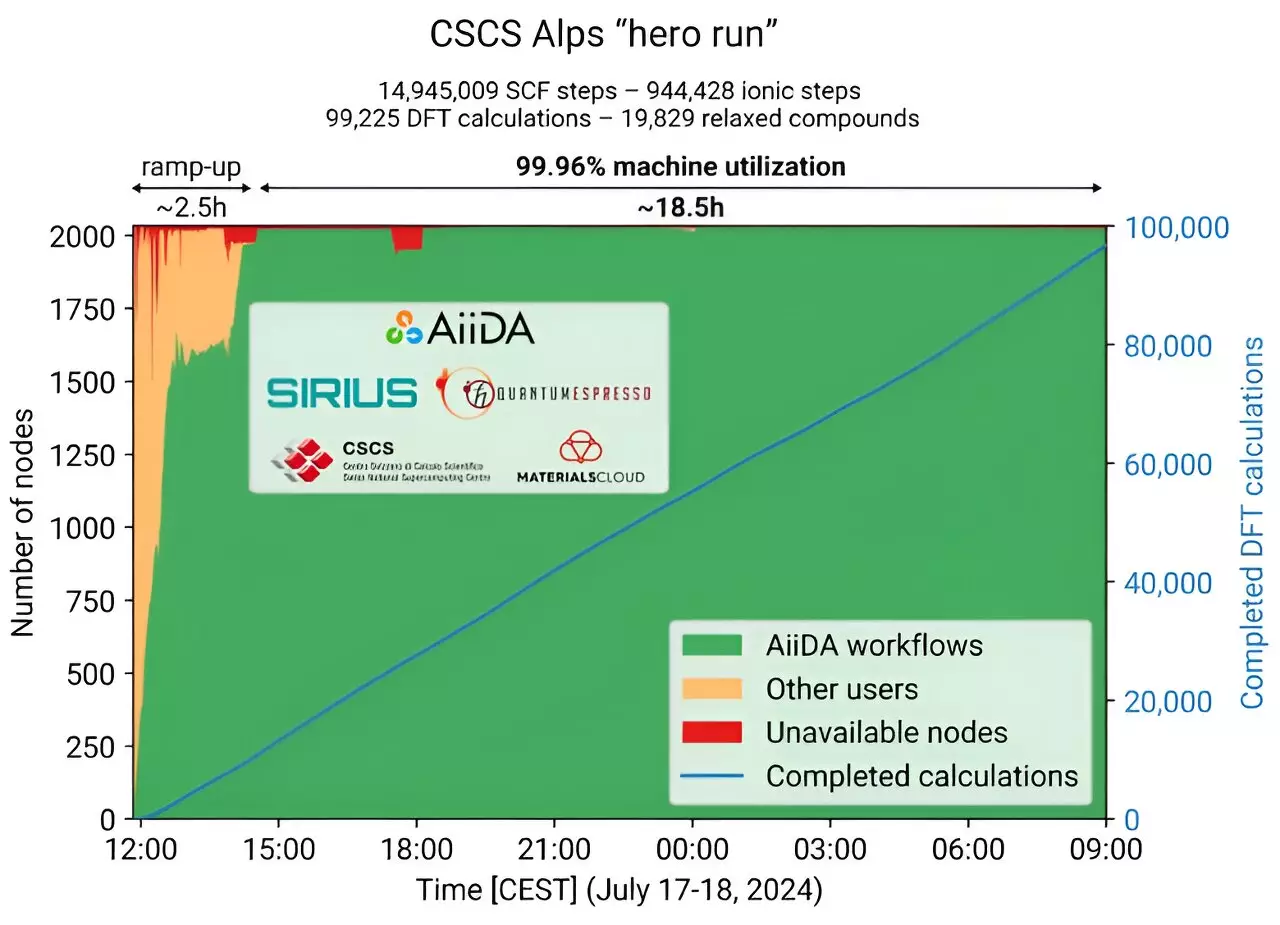In a groundbreaking demonstration of advanced computational capabilities, the Swiss National Center of Competence in Research NCCR MARVEL unveiled the potential of their newest supercomputing asset, the Alps supercomputer. In just 20 hours of intense calculation—driven by caffeine and determination—a dedicated team of scientists achieved remarkable results that highlight both the power of Switzerland’s newest technological triumph and the maturation of its software tools designed for materials science. This monumental achievement, which took place over the course of a single day and night, sets a new benchmark in high-throughput computational materials discovery.
Launched on September 14, 2024, and primarily housed in the Lugano data center, the Alps supercomputer has quickly established itself as one of the world’s leading computational giants. Operated by the Swiss National Supercomputing Center (CSCS), its impressive geo-distributed infrastructure allows for unprecedented computational capabilities. During its acceptance period, select research groups were given the opportunity to utilize this powerhouse, one of which was the esteemed team under Giovanni Pizzi, an integral part of the Laboratory for Materials Simulation (LMS) at the Paul Scherrer Institute (PSI). Their ambitious endeavor was to leverage the computational power of the Alps to explore new materials with applications across various industries.
Central to this venture was AiiDA, an open-source platform developed to streamline the intricate calculations involved in simulating material properties. The team aimed to harness AiiDA’s capabilities to fully utilize the computational strength of the Alps supercomputer. By running high-throughput calculations, they aimed to analyze thousands of material structures simultaneously, effectively narrowing down potential candidates for applications like next-generation batteries.
Giovanni Pizzi and his team, including researchers like Marnik Bercx, Michail Minotakis, and Timo Reents, embarked on what is known in computing circles as a “hero run.” This term refers to a dedicated time slot reserved for a single research team on a supercomputer, enabling them to seize the full capacity of the machine without sharing its resources with other users—a rare opportunity for any research team.
During the early hours of July 17, preparations began for the hero run. Using an enhanced version of the Quantum ESPRESSO computational code—in conjunction with the Sirius library, developed specifically to maximize GPU efficiency—the team meticulously prepared the input files for their calculations. Upon receiving approval from CSCS staff, they commenced the submission of input files to the Alps machine. Scheduling software managed job distribution across the supercomputer’s extensive resources, which feature a staggering total of 2033 NVIDIA Grace Hopper nodes, incorporating over 8,100 GPUs and nearly 585,500 CPU cores dedicated to this monumental task.
As the calculations launched, AiiDA diligently tracked each job, ensuring that completed tasks were promptly analyzed and results fed back into the system for ongoing workflow management. The run’s efficiency was remarkable, with AiiDA managing to occupy the entire computational capacity of the Alps.
Around 3 AM on the second day, the team took a brief respite, confident in AiiDA’s ability to autonomously manage tasks during their short downtime. Upon conclusion, AiiDA had successfully completed almost 100,000 calculations within roughly 16 hours—a staggering achievement. The focus of these computations was primarily on the electronic properties of approximately 20,000 crystal structures, with the aim of exploring their geometric configurations and magnetic characteristics.
The team selected medium-sized structures, balancing the computational load with the supercomputer’s vast capabilities. This strategic choice allowed them to effectively exploit Alps’ processing power while refining calculations to test new pseudopotentials, thereby updating and improving upon existing material databases.
This hero run did more than just showcase computational efficiency; it strengthened the foundation of collaborative research through shared data. The results from these calculations will be made publicly available as FAIR (Findable, Accessible, Interoperable, Reusable) data, and integrated into the Materials Cloud—a rich platform dedicated to the dissemination of research data from NCCR MARVEL.
The Alpine supercomputer’s inaugural “hero run” not only revealed the extraordinary capabilities of AiiDA and Alps but also illustrated the potential of computational materials science. By successfully squeezing an incredible amount of computational work typically allocated over a year into a mere 20-hour timeframe, this endeavor has opened new avenues for research—undoubtedly inspiring future studies and innovations in materials discovery. The collaboration between cutting-edge hardware and sophisticated software in this instance is a testament to the power of modern scientific inquiry, setting a high bar for what can be achieved in the field.


Leave a Reply